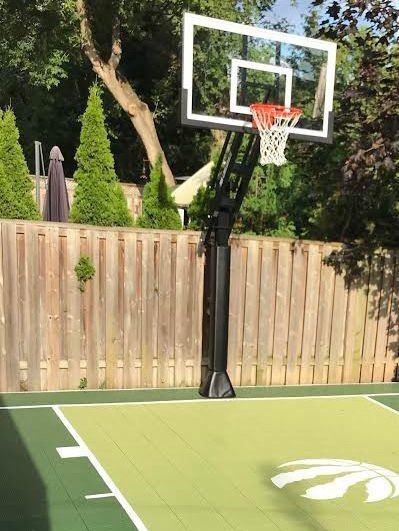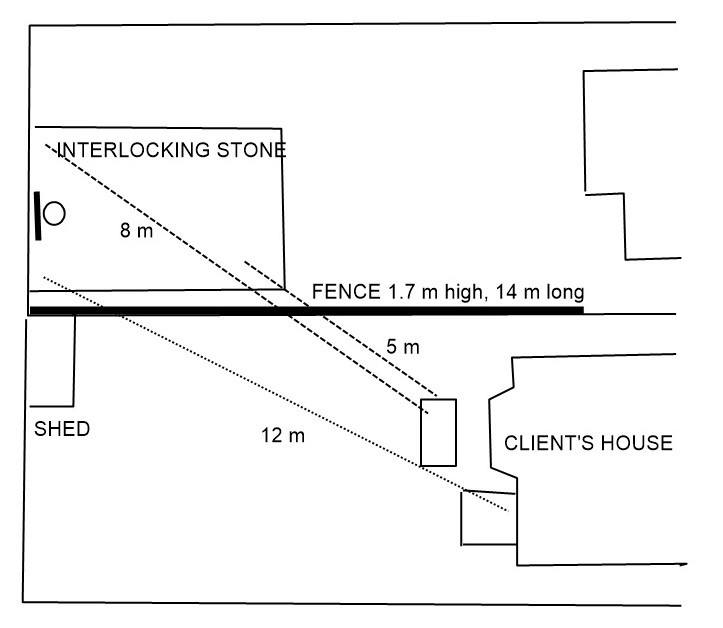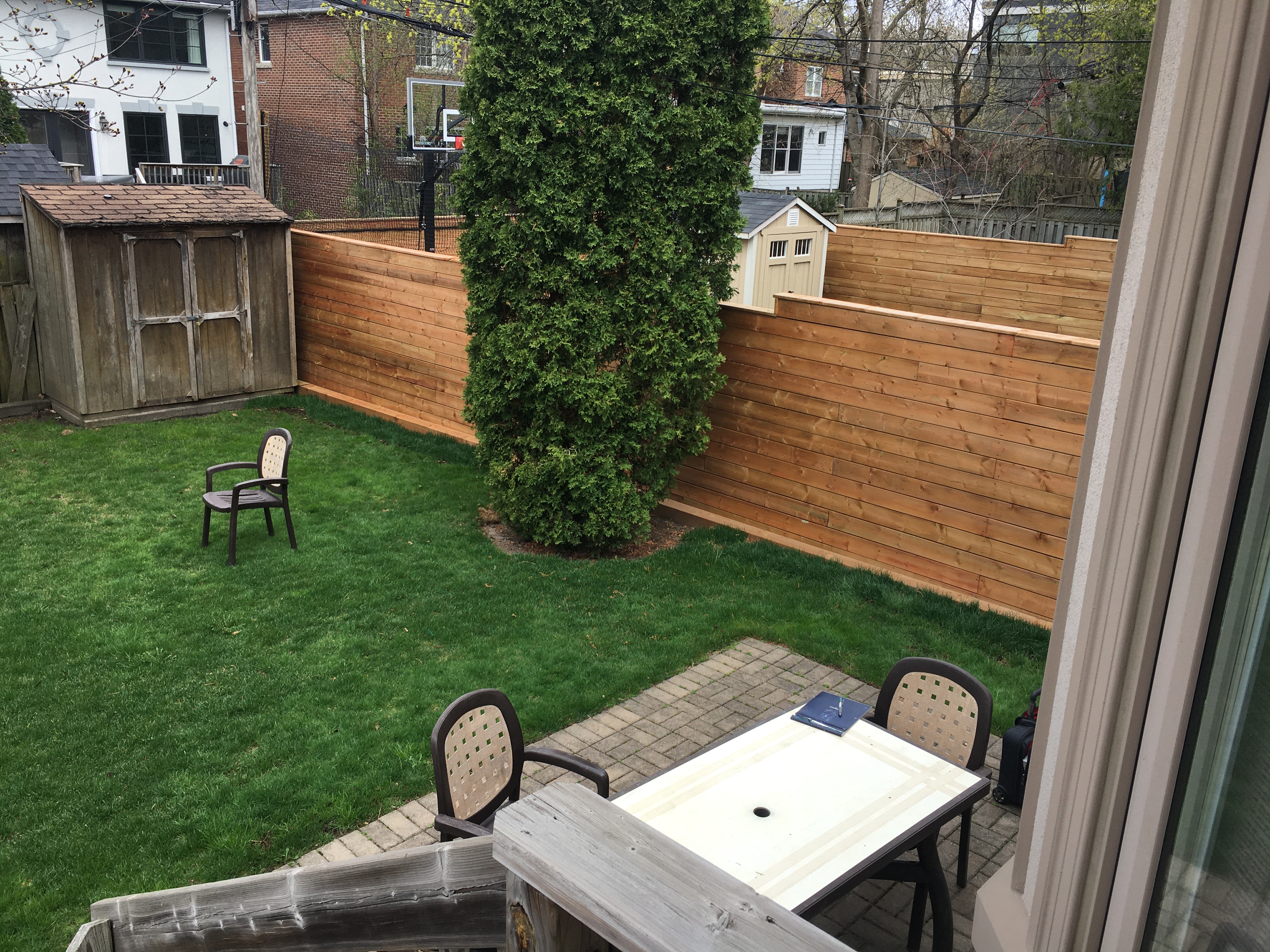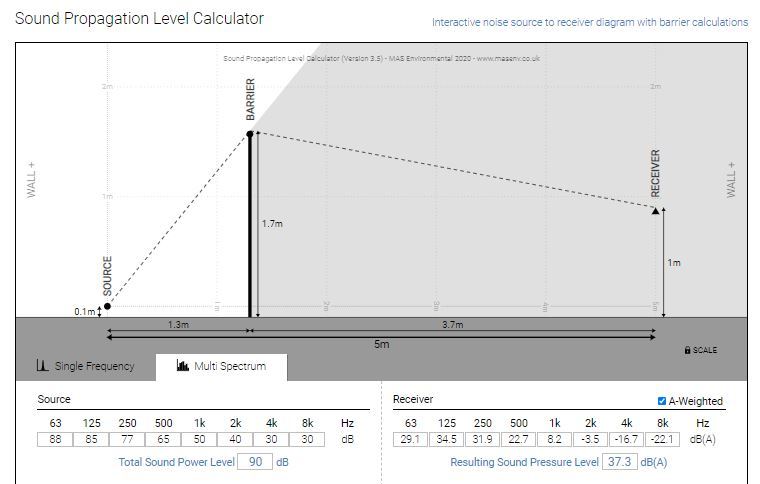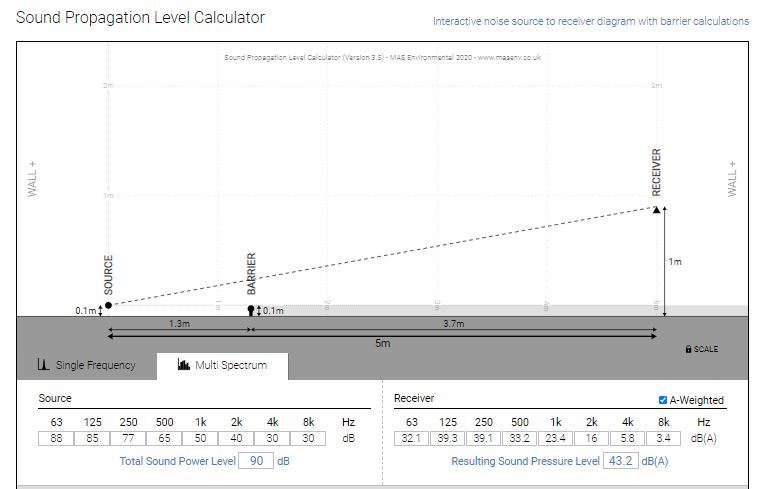I have recently received a call from a client complaining about noise from a neighbour’s backyard basketball court. He was looking for advice on how to reduce the noise. Interestingly, the client’s noise problem is not unusual, as illustrated by this CTV news article.
More...
However, I hear more commonly about noise complaints in condominiums, as illustrated in this article.
The basketball noise situation
The client was interested in improving the sound attenuation of his fence (Fig. 2) without significant changes to it. The layout of the client's situation is shown in Fig. 1. Noise of a bouncing basketball is transmitted through and over the fence.
The distance between the noise source and the reception point (outdoor eating area) varies based on the location of the basketball court.
Figure 1 - Situation layout
The emitted noise level caused by a bouncing ball is difficult to estimate. Therefore, the most accurate approach is to test the noise as it occurs. Unfortunately, I was not able to do this test. As a result, in the absence of the data, I have used information in reference [1] to approximate the noise levels in each frequency band, as shown in Table 1.
Frequency [Hz] | 83 | 300 | 420 | 540 | 660 | 780 |
Sound Pressure [dB] | 93 | 75 | 68 | 63 | 60 | 56 |
Table 1 - Estimated noise spectrum of a bouncing basketball
I have then used this information to estimate noise levels in octave frequency bands required to calculate the effectiveness of a noise barrier shown in Fig. 3.
Toronto noise bylaw
Toronto noise bylaw [2] limits noise levels as follows:
§ 591-2.9. Unreasonable and persistent noise.
A. No person shall make, cause or permit noise, at any time, that is unreasonable noise and persistent noise.
B. Subsection A only applies to sound or noise that is not described in § 591-2.1 through § 591-2.8. guidelines.
Noise limits for the “Class 1 or 2” area (applicable to the client’s location) for “outdoor points of reception” during the daytime between 7:00 and 23:00 under Ontario guidelines are 50 dBAI [3].
Note: " dBAI " means the A-weighted sound pressure level of an impulsive sound measured with a sound level meter set to "impulse" response.
“Point of reception” during daytime could be the location of outdoor eating area, or the plane of open window.
Legal remedy to basketball noise
It appears that the Toronto noise bylaw may be violated. A test should confirm this. The client may wish to take legal action based on the result.
For a noise barrier to be effective, it must be sufficiently high, higher than the maximum fence height permitted by the Toronto bylaw. There is a complicated Toronto bylaw [4] for fences, but it is unclear if it applies to noise barriers. In any case, the client can request an exception for constructing a taller fence/barrier.
The following discussion is based on enhancing the noise attenuation of the existing 1.7 m tall cedar board fence (Fig. 2) without modifying its height. This was the customer's preference.
Figure 2 - Fence at noisy basketball court
Using an online sound propagation calculator [4], I estimated the noise level at the location of the client's outdoor eating area.
The estimated closest location of the noise source (the bouncing basketball) is 5 m (see Fig. 1). The noise barrier effectiveness for this location is shown in Fig. 3.
Figure 3 – Noise barrier calculation for the closest bouncing ball location.
For comparison, the noise level at the outdoor eating area in the absence of the fence is shown in Fig. 4.
Figure 4 – Noise level calculation without a barrier.
Possible noise reduction
Here is the summary of the results for the outdoor table location:
Noise level without any barrier | 43.2 dBA | Noise reduction 5.9 dB |
Noise level with perfect barrier | 37.3 dBA |
Table 2 – Summary of results
The fence, as a noise barrier, even if perfectly noise-blocking, would reduce the noise level by only 6 dB. This reduction is a noticeable but modest improvement. Subjectively, it is perceived as about 30% noise reduction.
The calculation of the sound attenuation of the noise barrier assumes that noise transmitted through the barrier (rather than over it) is blocked perfectly. The barrier must attenuate the noise penetration by at least 8 dB more than the barrier effectiveness calculation in the two weakest (noisiest) frequency bands, 125 and 250 Hz.
In the client’s situation, this requirement was not met by the fence, even if it was enhanced by installing additional material over the fence. The existing fence, because of gaps between the boards, offers little noise reduction. This can be improved by enhancing the fence, but the resulting noise reduction will be modest, less than 6 dB, likely not satisfactory to the client.
I conclusion, the only way of reducing the noise levels by more than 6 dB is increasing the height and sound resistance of the fence.
A note about calculations:
Noise levels of a bouncing basketball and noise reduction by a barrier are all based on mathematical models that do not precisely reflect the actual situation on site. Therefore, as presented, the calculated noise levels can be inaccurate, but I estimate that the relative noise reduction calculation for the noise barrier is accurate.
